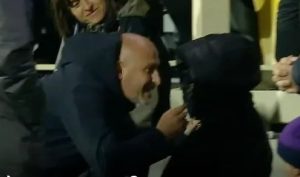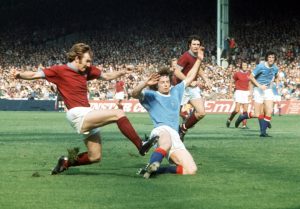Morocco have Ziyech and Hakimi to cause opposition problems at World Cup in Qatar – predicted line up and stats

IN the upcoming World Cup, Morocco have been placed in group F with Belgium, Croatia and Canada.
Morocco are ranked 22nd in the world, while Belgium are 2nd and Croatia are 12th, making Morocco third-favourite to get out of the group.
Canada sit in 41st, and have been mentioned as dark horses for the tournament – a little optimistically.
Predicted Starting XI
Since the appointment of the new manager, we only have two friendlies to go from for the predicted starting XI.
In the past two games, Morocco have lined up in a 4-1-4-1 formation, with a style based on creating chances through combination plays and attempts to keep possession of the ball in a patient system.
In goal, Yassine Bounou is one of the first names on the team sheet.
The 31-year-old has been a regular for Sevilla and his strong shot-stopping abilities have the potential to help Morocco advance through a few extra rounds.
DOUBLE YOUR WORLD CUP ODDS WITH GROSVENOR SPORT
read more world cup news
Arguably Morocco’s strongest area is their back line.
Achraf Hakimi is one of the best full-backs in the world, with his immense speed, ability to attack the box and ability to cross the ball into dangerous areas.
Hakimi is an important element of the team, and his combinations with Hakim Ziyech will likely be a key difference between failure and success in Qatar.
At left-back, Noussair Mazraoui from Bayern Munich will provide an excellent technical base from which Morocco can build play.
Originally a right back, Mazraoui has the technical ability and ability to play with either foot which allows him to be comfortable on the left-hand side.
CASINO SPECIAL – BEST NEW CUSTOMER SIGN UP DEALS
Most read in Football
He is vital to how Morocco how have been trying to progress the ball through the thirds, as well as providing a threat in the opposition box as well.
At centre-back, we can expect a pairing of Romain Saiss and Nayef Aguerd.
Romain Saiss has been playing all season, but he recently picked up an injury, which makes it unclear if he will be available for selection or not.
His aerial presence would be missed if he were to be unavailable, but Morocco do have a young defender in Achraf Dari available for selection who was trusted by the coach in the September friendlies.
In midfield, Sofyan Amrabat sits at the base, with an important role in the build-up phase.
Amrabat has been key as he drops deeper to collect the ball from the defence and helps progress it up the pitch.
Amrabat’s ability to stay patient, and always offer a passing option are key ways in how Morocco will attempt to keep possession of the ball when they win it.
Ahead of the pivot, Azzedine Ounahi and Amine Harit are the No8’s for Morocco. Ounahi was pivotal in the qualification phase for the World Cup.
Both he and Harit are creative midfielders, with excellent dribbling qualities that make the pair tricky to press, and difficult to tackle in the final third.
In the front line, Hakim Ziyech makes his return to the squad after coming out of international retirement.
HOW TO GET FREE BETS ON THE WORLD CUP
Ziyech has seen his game time become limited in the past few seasons, after becoming merely a rotation option for Chelsea.
On the left wing, Sofiane Boufal is expected to retain his place in the starting XI. Youssef En-Nesyri leads the attack for Morocco.
The Sevilla striker has struggled for first-team minutes this season but has scored 14 goals for Morocco in 48 appearances.
The target man will thrive off crosses coming into the box from the likes of Ziyech, or perhaps cutbacks from Hakimi.
Attacking phase
Morocco rank very highly amongst nations in the World Cup in their attacking metrics — though it must be noted that the standard of competition they’ve faced over the last calendar year differs from the quality they’ll come up against in Qatar.
When Morocco gain possession of the ball, they look to build play out from the back rather than going long.
The image below shows a great example of how Mazraoui can evade pressure by passing the ball around to get out of a tight situation.
Morocco’s Mazraoui is skilled at getting out of tight situations
When Morocco face a mid-block, Hakim Ziyech usually drifts into central midfield, from where he can make the most of his brilliant passing range and ball manipulation.
The image below shows Ziyech in that central space, where he turns on the ball, looks up and plays a diagonal ball to the left-hand side for Mazraoui.
When Ziyech is central, he looks for the diagonal ball to the left flank to Mazraoui
In the final third, Morocco try to set up in a 2-3-5 formation and make use of wide triangle combinations with the wide central midfielder, wide player and player operating in the half space.
In this attack pictured below, Ziyech has drifted into the wide space, which has caused the Chilean left-back to follow him, thus leaving a huge gap between the left-back and left-sided centre-back.
Clever Ziyech drags the left back out of position and creates a huge gap
Morocco have shown several different ways in which they can sustain possession and create threatening situations in the final third.
It will be no surprise to see Morocco have large spells of possession at the World Cup.
Defending phase
Morocco have a very strong backline, which will give confidence to the rest of the squad.
Morocca high-press aggressively
From dead balls, such as goal kicks and throw-ins, Morocco look to press their opponents aggressively.
The problem with this system, and arguably the biggest one, is the massive gap between the midfield and backline.
The Morocco defenders are worried about the space behind the defence so naturally drop off while the midfield holds their position to prevent the opponents from getting possession closer to goal.
As a result, opposition players can drift in the spaces between the lines, and the lack of pressure from behind means that they can easily turn with the ball and drive towards goal.
What ends up happening is that Morocco’s midfield is nearly non-existent, and opponents can easily give the ball to the front line and leave the defence unprotected.
Off the ball Morocco’s lack of structure could lead to losses
Morocco’s lack of structure off the ball is largely worrying and will be the biggest reason for any potential failures and losses.
Transitions
In offensive transitions, Morocco are very difficult to defend against due to the number of skilful ball carriers they have running in the open space.
The image below shows an example of Boufal excellent dribbling skill.
With a number of skilful ball carriers running into space, Morocco offer a threat in offensive transition
When Morocco lose possession of the ball, they are inconsistent with their actions off the ball.
Inconsistency with their actions of the ball happens when Morocco lose possession
Defenders
While the depth in defence isn’t the largest, there are plenty of possible players who may look to work their way into a starting spot if their performances improve in the last few weeks before the World Cup.
Jawad El Yamiq has recently regained his spot in the starting line-up for Real Valladolid, who have gone on a slight winning streak in La Liga.
The central defender provides adequate cover should some of the starters not recover from their injuries in time.
Midfielders
Adel Taarabt was used in deeper areas in the most recent parts of his career.
But, he missed out on selection in Qatar.
Imran Louza is another player who can slot into the midfield role. However, there are doubts about the fact he has been injured for the entirety of the season and is only coming back to training now.
Ilias Chair and Selim Amallah both can feature in the attacking midfield roles, as both have the vision to produce defence-cutting passes and the technical ability to dribble in tight spaces.
Morocco have the adequate depth to make changes if necessary, or to add extra creativity when chasing games.
Attackers
Munir El Haddadi has struggled for minutes at his current club Getafe, and while he has shown promising signs in the earlier stage of his career, he has struggled to get consistency in his performance and not been up to the required level.
He can provide a threat off the bench after playing for Morocco 11 times in the last 18 months with 2 goals for the nation.
Abde Ezzalzouli is a promising young player who is currently on loan from Barcelona. He was given his debut in September, and after a few good performances whilst out on loan, he may be given a chance to try to spark a change after coming off the bench.
Key player
Hakim Ziyech hasn’t featured for a long time for Chelsea and is a player that seems to be slightly forgotten about.
His inconsistent performances for his club have shown that he may not be at the world-class level.
However, Ziyech is capable of producing magic moments and when in form, he can carry his country to big results.
The Moroccan magician doesn’t have the greatest pass accuracy, due to his ambitious passing in the final third.
While the accuracy isn’t high, these passes are difficult to pull off, usually against a settled defence which gives huge rewards should it be successful.
Tournament predictions
Morocco faces a hard group, and it seems like they are set to fight for the 2nd place of the Group, but we’ll most likely see Belgium and Croatia qualifying to the Round of 16.
Read More on The Sun
If they manage to reach the eight-finals, things won’t be any easier as they’ll likely face Spain or Germany.
Life won’t be easy for Morocco in Qatar!
For even more detailed analysis of all 32 teams in the FIFA World Cup 2022, download your copy of the November Total Football Analysis magazine here






